ratio of sugar to water
I know that the correct ratio of sugar to water is 1 cup of sugar to 4 cups of water. My neighbor actually uses 1 cup of sugar for every 2 cups of water. She has tons of humming birds. I am currious if this is bad for the birds. I know that they use the sugar to fuel their little wings, and they get a lot of their nutrition from other sources such as insects. However, it occured to me that if they are getting that big a dose of sugar so quickly, they might be inclined to drink less sugar water and be at risk of dehydration.
Does anybody know? Is it bad for them to drink, consistenly, from a feeder that is two parts water to one part sugar? Or is it just a waste of money buying the sugar?
Thanks,
Nancy
Comments (24)
hummersteve
14 years agolast modified: 9 years agoI probably should not even comment on the subject not being an expert of any kind. But there are many articles on this issue. Is 2-1 mix too strong , I dont know. Will it harm them, I doubt it. I have read in more than one article that a hummer has some kind of built in clock, so that it needs a certain amount of energy for all it does. If the mix is rich it will eat less , if the mix is diluted it will drink more meals. Also it will not take the nectar of a certain plant if it is not the correct maturity or richness, is this true , I do not know . As far as fermenting goes , will boiling prevent to a degree, I dont know. I change my feeders every two-three days or less so I dont think it matters. Boil or not once a hummer sticks his beak into a feeder it is immediately contaminated with all the insects and different plants it samples. The article Im going to link for you is going to leave even more questions but a couple so called experts as they end up saying the amount or ratio of sugar to water is not as important as keeping your feeders clean and fresh. My final though I will leave you with is that the 1:4 ratio is related to the average flower nectar. All flower nectar is not the same some higher some lower. Nancy Newfield a bander in Lou. has run tests on many different flower contents. If you want to know more in that area contact her.
Here is a link that might be useful: question on 1:4 ratio for hummers
vickilovesboxers
14 years agolast modified: 9 years agoHi Nancy--I just commented to donnalovesblue who posted about this topic on July 6 -just like you did. Below I am pasting my comments on her post.
Like Steve--I am not an expert-but I have read the experts and I am convinced that 3:1 is a good formula.
Apparently the Hummers just come more often to flowers and feeders with a less ratio of sugar.
I believe -as Steve has stated that clean feeders and fresh formula -however you mix it-is much more important. And if in a hot and dry season use 4:1 till conditions improve.Here is are my comments to Donna
Donna-
this is old news. New SCIENTIFIC evidence simply does not support this information.
Many Hummingbird plants, such as Trumpet Creeper have at least a 33% ratio. This is simply wrong information!
Last season I posted a link to a scientific study that gave the ratio for many Hummingbird plants and I also printed a letter from author Sherri Williamson that I received from her answering my question about formula--I am pasting it below.""Hi everyone- I am new to this forum but I have had the exact same question about sugar formulas.
I am sure many of you are familiar with Sheri Williamson who wrote "Attracting and feeding hummingbirds" a few years ago.
I went to her website and I asked her that very question via email. Following I will quote her answer and a link to a site with research that has been done on nectar content of flowers. You may all be surprised to know that most hummingbird favored flowers contain more nectar than any of us thought.
Quote from Sheri
"Some hummingbird experts do (or did) insist on a feeder solution no stronger than 4:1, but I've never been a member of that camp. On page 40 of Attracting and Feeding you'll find that I recommend a solution of three to five parts water to one part sugar - a pretty wide range. Hummingbird-pollinated flowers produce nectar that ranges in sugar content from as weak as 10:1 to as strong as 1:1.
Both of the extremes are rare, and the average sugar content is close to 3:1.
Studies of the birds' physiology suggest that solutions stronger than 3:1 may not provide sufficient water in extremely hot, dry conditions and that solutions
weaker than 4:1 may not provide enough sugar for the birds to maintain their body weight when the weather is cold (stronger solutions also freeze at lower temperatures, which is very useful for people lucky enough to host hummingbirds year round). A 5:1 solution can be useful in discouraging bees or helping the
birds through extreme heat and drought.
When I wrote Attracting and Feeding eight years ago, I was deliberately
conservative in my recommendations to avoid upsetting a handful of my colleagues
in the hummingbird community who were adamantly opposed to solutions stronger
than 4:1. Since then most of them have changed their minds, thanks in large part
to the article that begins on page 7 of this issue of the Louisiana
Ornithological Society News:
http://losbird.org/news/0326_201_news.pdf
I now feed 3:1 most of the year, except during the very hot, dry days of late
spring and early summer, and I do think it helps the southbound migrants and
overwintering birds. Using a slightly stronger solution may not be as important
to your feeding strategy with all the good natural food you're providing, but it
isn't going to do the birds any harm."
End of quote from Sheri )""Donna those of us who feed a stronger formula simply are not hurting our beloved birds.
I ask you to please go to the site of the scientific study listed in Sherri's letter and read it for yourself.
The information you quoted does not even have any evidence or facts or science behind it. Where does the lady quoted get her information?
3 to 1 is not harmful and the experts are now using it!Will you pleases read the information I have listed and then tell us what you think?
Thanks, Vicki
I can't find a way to change font or highlite here so I hope you can figure out which are the quotes!!
Related Professionals
Belmont Landscape Architects & Landscape Designers · Richmond Heights Landscape Architects & Landscape Designers · Suffern Landscape Architects & Landscape Designers · Bethlehem Landscape Contractors · Bellefontaine Neighbors Landscape Contractors · Cliffside Park Landscape Contractors · Forest Hills Landscape Contractors · Mastic Beach Landscape Contractors · Nanuet Landscape Contractors · New Brighton Landscape Contractors · Silver Firs Landscape Contractors · Crowley Landscape Contractors · Baileys Crossroads Landscape Contractors · Midlothian Decks, Patios & Outdoor Enclosures · Universal City Decks, Patios & Outdoor Enclosureskr222
13 years agolast modified: 9 years agoThree cups water with one cup sugar.
If you want less nectar, try one cup water with 1/3 cup sugar.hummersteve
13 years agolast modified: 9 years agoAs hummers are first arriving I feel the need is greater for a stronger mix , right now Im using 1:3 sugar to water , later on as I get my regulars I switch to 1:4 then later as migration approaches I go back to 1:3 untill they are gone.
PaulDavid63
12 years agolast modified: 9 years agoWhen I was trying to build up the number a hummers I had several years ago at a new location, I tried several things. Mixing the sugar water was tried at 3-1 as I was sure this would do the trick. It did nothing, but the hummers seemed to come less often; and as I read an aticle that stated they came in order to get a certain amount of calories per time frame it seemed to make sense. I went back to 4-1 ratio (I cheat a little on that by rounding the sugar some). The calorie thing probably does not work when they are in southward migration mode because they are trying to fatten up. I learned that in this section of posts Just Now and will maybe jump the ratio up to 3-1 very late in the migration southward when they just sit on my feeders drinking and drinking. Although I have not tried a 5-1 ratio, I saw that ratio stamped into an older feeder that I saw. I believe the number of birds is directly proportional to the amount of red in the vacinity of the feeders and the number of feeders and of course the part of the country in which you live. Park a red car, red truck, red four wheeler, red golf cart and a few red chairs out back to attract the hummers. I have always put my feeders close together and where I will see them. I normally have about 12 birds all day (this might compute to 50 or so coming and going) on the feeders (8). Been here 3 years. Had about 45 birds on the feeders for 3-5 days in the evenings on their way north. P.S. My neighbor at my last location tried to do everything to get some of my 70 birds. She volunteered to do my feeders while I was gone for a few days and you couldn't even taste the sugar in it. Hers must have been 1-1. Took a day or so to get the birds back.
PaulDavid63
12 years agolast modified: 9 years agoI am currently conducting an experiment. In a straight line under my patio, I have feeders at 37 feet(5-1 ratio), 34' (4-1), 31' (3-1), 28' (2-1 wow very thick), 25' (4-1), 22' (4-1), 19' (4-1) & 16' (4-1 ratio). This footage is from where I normally sit. With all feeders filled with 4-1 sugar water, the 37 foot distance feeder is the most popular. The order of poplularity has been 37, 34, 31, 28, 19, 16, 25 & 22. After 4 hours that seems to remain the same although #1 may have shifted to 34' (not certain about this as the 34' feeder has always been very popular, but definitely not to the 28' or 31'). Will know more by tomorrow. There are enough birds moving each other around that a large number of birds have tried the 3-1 & 2-1 ratios and they don't appear to like it any better. Also, my feeders do not leak, but the birds are a little sloppy and the wasps have been on the 5-1 feeder just as much as the 2-1. Strange!
christie_sw_mo
12 years agolast modified: 9 years agoGreat experiment - how's it going now? Most people say to use either a 4-1 or 3-1 ratio so I use 3 1/2. lol
ctnchpr
12 years agolast modified: 9 years agoMe too, christie - 3 1/2:1. How close are you to Joplin?
PaulDavid63
12 years agolast modified: 9 years agoTest completed. Although these birds would move around to different feeders because other birds would cause them to, they didn't care if it was 5-1 or 2-1. The feeder with the 5-1 ratio was drained first; not because it tasted any better, it was the preferred feeding station. The feeder 3 feet from it was a 4-1 mix and it was drained 2nd as has been the case all summer. The next feeder 3 more feet was a 3-1 mix and it still had some and was moved and the next feeder which was a whopping 2-1 mix had even more left in it and was moved. I have always tried to make my humming bird food a little stronger than 4-1 by putting a little more sugar than 1 cup or glass to 4 water, but I certainly won't worry about that anymore. It's 4-1. I do strongly believe the birds come more often with a weaker mix and I want to see them more often. Don't want to run any of my birds off, but am wondering at what point they will not return to a feeder if it is too weak.
hummersteve
12 years agolast modified: 9 years agoAnother thing I have noticed concerning wasps on feeders. I put my feeders out 3 weeks before the hummers showed up at a 1:3 mix and yet the wasps would not even land on the feeders , not untill the hummers arrive and draw the nectar up. This is on bottle type feeders. I notice this every year . Once the hummers arrive and start drawing the nectar the wasps will always go back to it.
tima9209
12 years agolast modified: 9 years agoI think it's a combination of:
1. The wasp population has increased.
2. The hummingbirds are messy eaters, and some of the nectar ends up on the outside of the feeder by bill or tongue flicking.
Best thing to do is launch a search and destroy mission for wasp nests. Look in bushes, trees, around fence posts, under eaves, in the attic, etc. I killed a big nest in a nearby fence last year, and the wasp traffic dropped off considerably.
PaulDavid63
12 years agolast modified: 9 years agoThe birds are sloppy eaters. P.S. Another thing about the experiment was that there were more wasps on the 5-1 feeder. Now, I only had 2-3 wasps; but they seemed to go where the most nectar was slopped out. There was some slopped out on the 2-1 feeder, also. If I lived near the Gulf, I think I would use 3-1 mix during the southward migration. I sure miss my 75 females just sitting on the feeders the last week or so for hours and then one day they are all gone!
hummersteve
12 years agolast modified: 9 years agoIt makes sense that if early in the season you can capture some queens then you can lower the wasp population. So I put out some of those yellow hornet design plastic nests using sugary water and pieces of meat . Sure I captured hundreds of wasps during the summer but it seemed all I did was attract more and more wasps. The next year I didnt use these traps at all and the population in my yard was lower. The thing about wasps besides their stings is they battle hummers for feeders and they will battle each other and you for their feeding area.
PaulDavid63
12 years agolast modified: 9 years agoMay try 100% water, 15-1, 10-1 & 5-1, 4-1, 4-1, 4-1 & 4-1 next week with the 100% water on the most popular feeder. I think they will move till they like the sugar content. I will be shocked if they drain the water first. I also will be shocked if each one dips in there more than once. If they like the water, I might try some ice in it later. They seem to like the nectar right out of the fridge.
ctnchpr
12 years agolast modified: 9 years agoPaul David,
You will get more visits per hummer with the weak mixes, but it may not be the best thing for them, especially for nesting females. This was posted here about 2 years ago:
stronger solutions help mama hummingbird
Posted by carolreese z7 TN (My Page) on Tue, Apr 21, 09 at 14:44
I meet with lots of resistance on this topic, but let me stress that I have read many scientific papers on hummingbird feeding and metabolism before I began making my solution 1 part sugar to 2 parts water. I will mention the scientific studies throughout, so that you may do your own investigations.
First of all, make it easy on yourself, you do not need to boil the water. The sugar will melt with a little extra stirring, and the solution will not be prevented from spoiling by boiling it. The first hummer to stick his tongue in it introduces microbes. Of course, the feeders should be cleaned and refilled anytime you see cloudiness, usually every few days.If you read the studies, you will find that many of the flowers that hummingbirds prefer have nectar concentrations anywhere from thirty percent sugar to an astounding forty-three percent (jewelweed). Some of the desert salvias have even higher concentrations. Here is a link that will list a number of studies on this topic. http://www.springerlink.com/content/r12612v82625n115/
Researchers found that some of the "hummingbird flowers" that have lower sugar concentrations, are that way in order to discourage bees, which on certain floral structures are NOT good pollinators. Apparently the flower needs hummingbird business but not bees. If you average the sugar concentrations of the flowers a hummingbird visits, it runs around 31-33%.
For starters, I recommend reading a report by two scientists, Hainsworth and Wolf, biologists with Syracuse University. They studied the feeding habits of hummingbirds presented with different sugar solutions. They found that a hummingbird takes in about the same amount of calories per hour. If the solution is strong, they visit the feeder just a few times an hour. If the solution is weak, the birds visit much more often to take in the same number of calories. Here is the link. http://www.hummingbirds.net/hainsworth.html
Hummingbirds are actually insectivores, but require a lot of sugar to fuel their search, and fuel is the operative word. A hummingbird must take in an enormous amount of nectar, several times its body its body weight each day. The feeding day is a balance between energy expended for the calories gained. That�s one reason hummingbirds prefer feeders with perches. In fact, hummingbirds spend as much as 80% of the day perched, conserving their energy.
After learning this, I began making my solutions stronger, two parts water to one part sugar, or about 33%. Those who insist a solution this strong is dangerous, must be unaware of this study, or aren�t thinking it through. The little birds are eating the SAME AMOUNT of sugar per hour, they just don�t have to work so hard to get it. I feel entirely comfortable making my sugar solutions stronger after reading that hummingbirds take in about the same amount of calories per hour regardless of the strength of the sugar solution. Weaker solutions just make the hummingbird visit the feeder more often, making it work harder, burn more fuel...and no, a thicker syrup is NOT hard for the hummers to lap up, this is another of those silly unfounded claims.
I want to make the case for a stronger solution helping out the mama hummer. She is a single mom, getting absolutely no help from the male. She alone incubates the eggs, and has only a few minutes away from them each hour to feed. Once the eggs hatch, she must struggle to keep the hatchlings fed as well, regurgitating nectar and small insects, as well as meet her own needs. A stronger solution means she has to work a little less hard.
Also realize that all hummingbirds actually need to put on weight later in the summer to bulk up for the coming migratory flight. Hummingbirds drop about 40% of their body weight during the flight south to Central America.
Speaking at a conference in Pennsylvania a few years ago, I made my case for stronger sugar solutions to an audience that apparently did not take it well.
A few days after returning home, I received a scolding email stating that my recommendations were dangerous for hummingbirds. One of the claims made in the email was that the hummingbirds might become diabetic. Apparently this person did not know about the study done by Dr. James Hargrove in Georgia that explored the reasons hummingbirds were able to take in so much sugar without becoming diabetic. You can read about it here. http://www.pubmedcentral.nih.gov/articlerender.fcgi?artid=1325055
Another claim made in the email was that the hummingbirds would need straight water after drinking such a rich mixture and would sip from puddles that might contain pesticides or radiator fluid, poisoning the thirsty little birds. Apparently they did not know about the studies by Drs. Hiebert and Calder, among others, that discussed the problems created by too much water intake. It seems that maintaining a balance of necessary minerals and salts is difficult for a bird that must drink so much fluid throughout the feeding day. Dilute nectar results in more frequent urination which results in loss of minerals and salts, just as you would lose electrolytes if you drank excessive amounts of water. Hummingbirds have occasionally been observed (Adams and Des Lauriers) licking soil, that was later tested and found to have high levels of phosphorous, potassium and calcium. Hmm, seems like a weaker solution is more likely to have birds licking up dangerous compounds, rather than the opposite - though that claim was ludicrous from the start.
I was also scolded for using more sugar since that might cause more land to go into sugar production. This is where I realize this person did not even understand the first study I recommended she read - where Hainsworth's research showed that the hummingbird will take in the same amount, I repeat, the same amount of sugar each hour, it is just that it takes fewer visits if the sugar mixture is richer. Maybe she can't understand that means that I am not using more sugar, I am just making the hummers caloric needs easier to satisfy. Of course the amount of sugar I use in my feeders compared to the sugar in the soft drinks, candy and cookies in this country is miniscule, so that objection was laughable to start with.
It�s astonishing how some people react to new information, especially information that may question long held beliefs. When I asked the person who wrote the email for references to back her claims, she quoted several "hummingbird experts", people who had written books, for example. When I pressed her for the science that supported their recommendations, there was no response. I supplied her with my references, and hoped to hear that she�d learned from their research. I�m still holding my breath.
PaulDavid63
12 years agolast modified: 9 years agoI am not one to jump on the scientific band wagon. Most of what I know about hummers is from first hand experience and reading (much of what I have read is not true). Although I am feeding hummers for my enjoyment, I would not do anything to intentionally to hurt them. I don't use red dye because it might hurt them and it is a useless step. I used a 4-1 mix about 70 miles off the Gulf and had 75 plus birds for 2-3 weeks (75 females the last week). Those birds sat there a large part of the day fattening up and I don't feel a bit guilty for them staying longer to get their calories. They would have done just fine without me. I do not own any feeders without perches because I read that they used 45 more times as many calories hovering. I'm only guessing what the benifits are to feeding on my 4-1 mix as opposed to local flowers, but I bet it is tremendous or these very smart birds would not be at them. I don't have a problem with feeding hummers with a 2-1 ratio, but I don't see how anyone would think hovering over a 2-1 (33%)flower for a second or two would be as many calories as sitting on a feeder of 4-1. We all like to think we are doing the hummers a favor, but we are actually doing ourselves a favor by feeding them. They will be just fine! Don't do anything that you think might harm them. Do I think a 2-1 mix will harm hummers? NO! Do I think it will be a great thing for hummers? NO! But if I were selling sugar, I would recomend probably 1-1 (50%). I'm sticking with 4-1, but will try plain water, 15-1, 10-1 & 5-1 next week along with four feeders of 4-1. Keep in mind that the stronger the sugar water, the less you will see hummers. Yes, I think I tried 3-1 down off the coast and had fewer trips to the feeders.
Julie717
12 years agolast modified: 9 years agoHi--I remember reading an article written by a hummingbird researcher that even a 1-1 ratio would not hurt them, although it would spoil fast. He said that 4-1 was a fairly weak solution roughly equal to the least-sugary plants that hummingbirds would eat from, but since it was weak, you would see them coming to the feeder more often.
The only way the very high-sugar solution could hurt them is if there was no water available anywhere for them to drink, they might get dehydrated.
gardengal48 (PNW Z8/9)
4 years agolast modified: 4 years ago"That is too much sugar. It harms their liver and kidneys and slowly die."
Not true!! There are various ornithological sites that state bumping up the ratio to 2:1 or 1:1 in winter or just as migration starts dos not hurt the birds AT ALL and just provides and extra boost of energy.
mblan13
4 years agoI use 3:1 for a few weeks in spring and a few weeks in the fall, during the migration. Summer its 4:1. They come back more often!
Kiley Nicholes
3 years agoSo question I have this problem and it says Louis uses 4 cups of sugar so how much water should she use
gardengal48 (PNW Z8/9)
3 years agoIf you want the standard 4:1 sugar water ratio, then you would need 16 cups of water. But that's a whole gallon of nectar/sugar water so unless you have scads of feeders, I'd reduce the formulation down.
fwiw, I use 1 cup of sugar to 4 cups water and that fills two feeders. And I prefer to make fresh each time rather than store in the refrigerator.
Margos is cbbn be in Wainwright
2 years agoI read it's not good to boil the sugar water. Only use very hot water from your sink and add your desired amount of sugar, then stir until sugar water is clear and dissolved.
The reason they suggest not to use boil the water was because it causes sugar crystals that are not good for the birds to digest.
I have always used 2-cups of sugar to 8 cups of water. And I clean my feeders every 3 days in the summer and once a week in the winter.
I also learned that if you plan on feeding hummingbirds, that you should not stop.
The birds will automatically migrate where it's warmer during our winter.
Some will stay behind and depend on you for their sweet water. And they can die from being so cold and no flowers blooming and their feeders are empty.
I love hummingbirds. They remind me if little messengers from our heavens above with a message that our loved ones are ok...
They're so beautiful ❤️
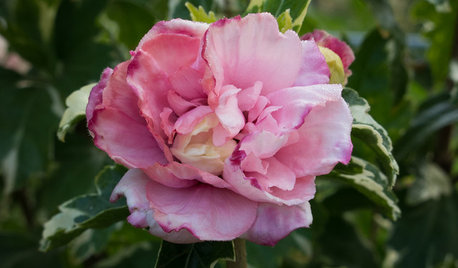



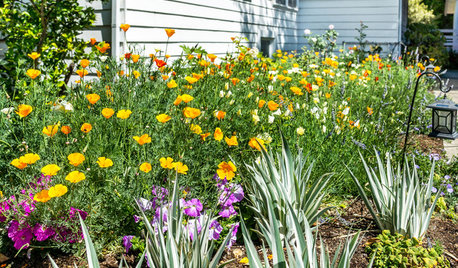


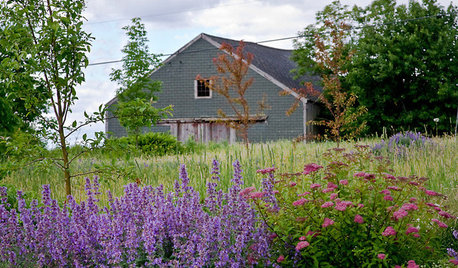
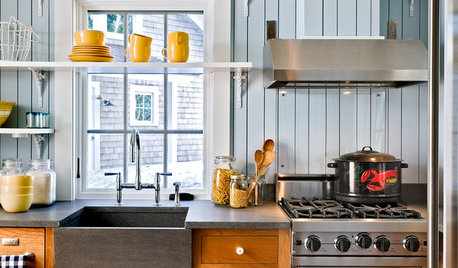







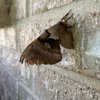
ryanmillicent_yahoo_com